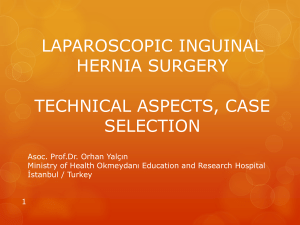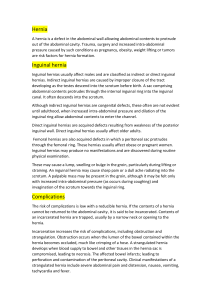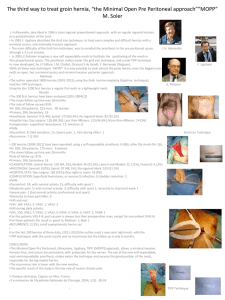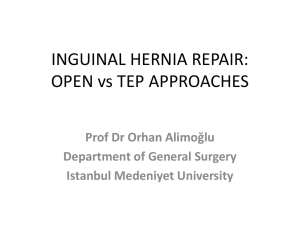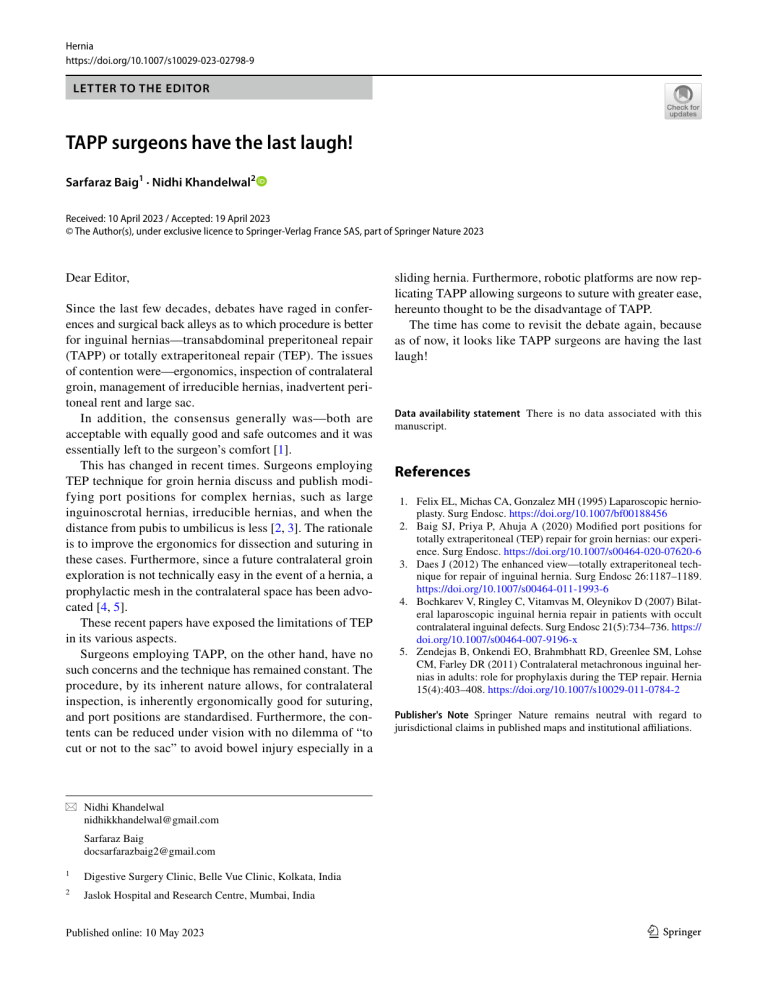
Hernia https://doi.org/10.1007/s10029-023-02798-9 LETTER TO THE EDITOR TAPP surgeons have the last laugh! Sarfaraz Baig1 · Nidhi Khandelwal2 Received: 10 April 2023 / Accepted: 19 April 2023 © The Author(s), under exclusive licence to Springer-Verlag France SAS, part of Springer Nature 2023 Dear Editor, Since the last few decades, debates have raged in conferences and surgical back alleys as to which procedure is better for inguinal hernias—transabdominal preperitoneal repair (TAPP) or totally extraperitoneal repair (TEP). The issues of contention were—ergonomics, inspection of contralateral groin, management of irreducible hernias, inadvertent peritoneal rent and large sac. In addition, the consensus generally was—both are acceptable with equally good and safe outcomes and it was essentially left to the surgeon’s comfort [1]. This has changed in recent times. Surgeons employing TEP technique for groin hernia discuss and publish modifying port positions for complex hernias, such as large inguinoscrotal hernias, irreducible hernias, and when the distance from pubis to umbilicus is less [2, 3]. The rationale is to improve the ergonomics for dissection and suturing in these cases. Furthermore, since a future contralateral groin exploration is not technically easy in the event of a hernia, a prophylactic mesh in the contralateral space has been advocated [4, 5]. These recent papers have exposed the limitations of TEP in its various aspects. Surgeons employing TAPP, on the other hand, have no such concerns and the technique has remained constant. The procedure, by its inherent nature allows, for contralateral inspection, is inherently ergonomically good for suturing, and port positions are standardised. Furthermore, the contents can be reduced under vision with no dilemma of “to cut or not to the sac” to avoid bowel injury especially in a sliding hernia. Furthermore, robotic platforms are now replicating TAPP allowing surgeons to suture with greater ease, hereunto thought to be the disadvantage of TAPP. The time has come to revisit the debate again, because as of now, it looks like TAPP surgeons are having the last laugh! Data availability statement There is no data associated with this manuscript. References 1. Felix EL, Michas CA, Gonzalez MH (1995) Laparoscopic hernioplasty. Surg Endosc. https://doi.org/10.1007/bf00188456 2. Baig SJ, Priya P, Ahuja A (2020) Modified port positions for totally extraperitoneal (TEP) repair for groin hernias: our experience. Surg Endosc. https://doi.org/10.1007/s00464-020-07620-6 3. Daes J (2012) The enhanced view—totally extraperitoneal technique for repair of inguinal hernia. Surg Endosc 26:1187–1189. https://doi.org/10.1007/s00464-011-1993-6 4. Bochkarev V, Ringley C, Vitamvas M, Oleynikov D (2007) Bilateral laparoscopic inguinal hernia repair in patients with occult contralateral inguinal defects. Surg Endosc 21(5):734–736. https:// doi.org/10.1007/s00464-007-9196-x 5. Zendejas B, Onkendi EO, Brahmbhatt RD, Greenlee SM, Lohse CM, Farley DR (2011) Contralateral metachronous inguinal hernias in adults: role for prophylaxis during the TEP repair. Hernia 15(4):403–408. https://doi.org/10.1007/s10029-011-0784-2 Publisher's Note Springer Nature remains neutral with regard to jurisdictional claims in published maps and institutional affiliations. * Nidhi Khandelwal nidhikkhandelwal@gmail.com Sarfaraz Baig docsarfarazbaig2@gmail.com 1 Digestive Surgery Clinic, Belle Vue Clinic, Kolkata, India 2 Jaslok Hospital and Research Centre, Mumbai, India 13 Vol.:(0123456789)

